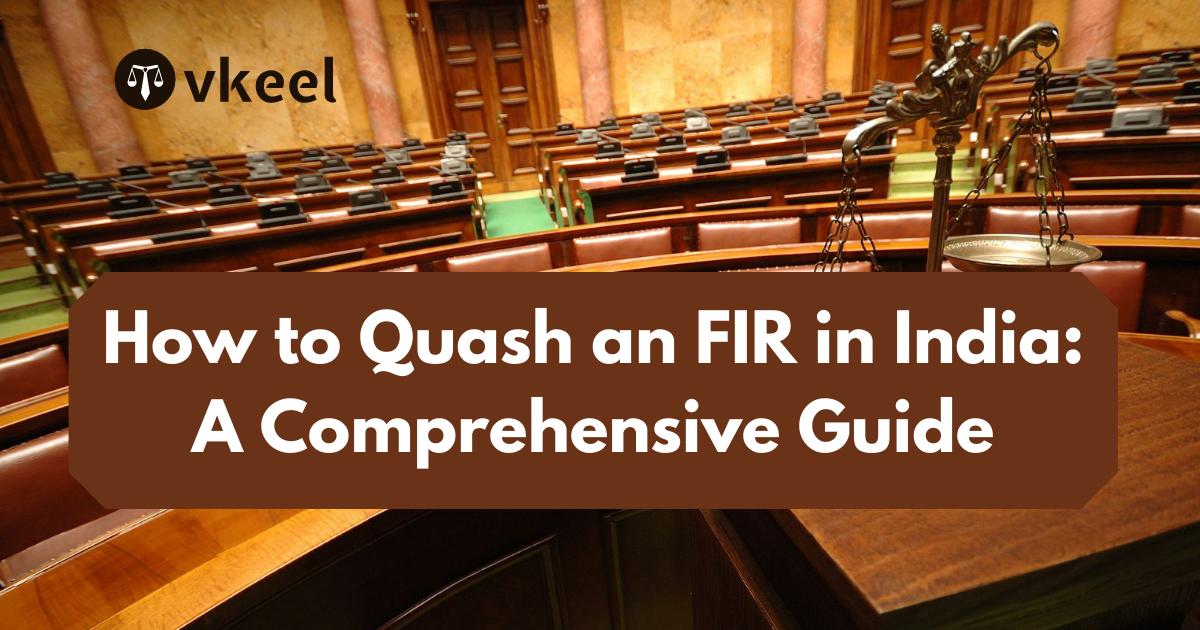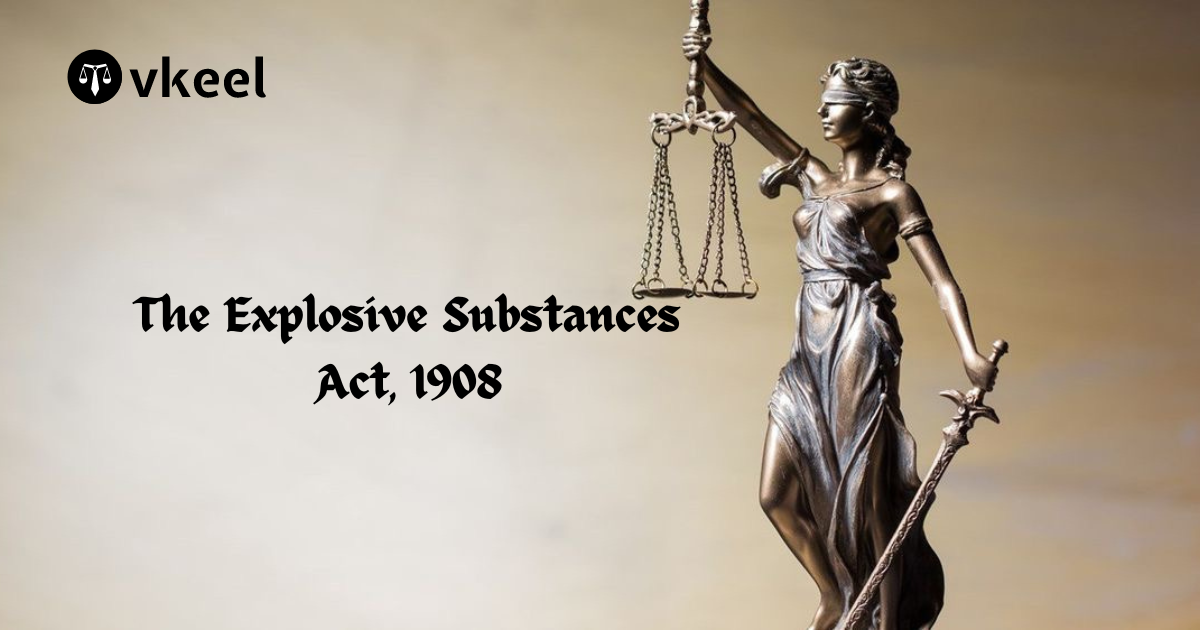How to Quash an FIR in India: A Comprehensive Guide
By Himanshu Kumar
Table of Contents
Introduction
In India, the First Information Report (FIR) serves as the starting point of a criminal investigation. Once an FIR is lodged, it can set into motion a series of legal processes that can be daunting and stressful. However, there are circumstances where the FIR might be filed maliciously, based on false information, or in a manner that constitutes an abuse of the legal process. Under such conditions, the law provides a remedy to quash the FIR. This article provides a detailed guide on how to quash an FIR, exploring the legal provisions, procedures, case laws, and amendments relevant to the process.
The primary objective of a First Information Report (FIR) is to set the criminal justice process in motion by providing the police with the initial information about a cognizable offense. The FIR serves as the official record of the complaint made by the informant, ensuring that the police take immediate action to investigate the crime. It details the nature of the offense, the identity of the accused (if known), and the circumstances under which the crime was committed. This formal documentation is crucial because it enables law enforcement agencies to take prompt and appropriate steps to prevent further harm, collect evidence, and apprehend the culprits.
Additionally, the FIR serves as a foundational document for the judicial process, forming the basis of subsequent legal proceedings. It ensures transparency and accountability in the investigation, as it is a public document that can be referred to by the judiciary, legal practitioners, and the involved parties. The FIR helps safeguard the rights of the victim by officially recording their complaint, which is essential for ensuring that justice is pursued. Furthermore, it acts as a deterrent to potential offenders by demonstrating that the legal system actively responds to reported crimes, thus upholding the rule of law and contributing to public safety and trust in the legal system.
Understanding FIR and Its Legal Framework
An FIR is a written document prepared by the police when they receive information about the commission of a cognizable offense. The primary purpose of an FIR is to set the criminal law in motion and enable the police to start the investigation. The filing of an FIR is governed by Section 154 of the Code of Criminal Procedure, 1973 (CrPC).
Grounds for Quashing an FIR
The quashing of an FIR can be sought under several grounds, including but not limited to:
- Lack of Prima Facie Case: If the FIR does not disclose any prima facie case against the accused.
- Malicious Prosecution: If the FIR is filed with a malicious intent and to harass the accused.
- Inherent Lack of Jurisdiction: If the police do not have the jurisdiction to investigate the offense mentioned in the FIR.
- Settlement Between Parties: In cases of non-compoundable offenses, if the parties involved have settled the matter amicably.
- Barred by Law: If the allegations in the FIR do not constitute an offense under the law.
Legal Provisions for Quashing an FIR
The primary legal provision for quashing an FIR is found under Section 482 of the CrPC, which deals with the inherent powers of the High Court. Section 482 states:
“Nothing in this Code shall be deemed to limit or affect the inherent powers of the High Court to make such orders as may be necessary to give effect to any order under this Code, or to prevent abuse of the process of any Court, or otherwise to secure the ends of justice.”
Procedure to Quash an FIR
The process of quashing an FIR involves several steps:
1. Filing a Petition
The first step is to file a petition under Section 482 of the CrPC in the High Court. The petition should include:
- A copy of the FIR.
- Details of the allegations and the grounds for seeking quashing.
- Supporting documents and evidence.
2. Drafting the Petition
The petition should be drafted clearly and concisely, stating all relevant facts and legal grounds. It should also include:
- The background of the case.
- The specific relief sought.
- Legal arguments supporting the quashing of the FIR.
3. Notice to Respondents
Upon filing the petition, the High Court may issue a notice to the respondents, including the complainant and the police authorities, to present their side.
4. Hearing
The High Court will conduct hearings where both parties present their arguments. The petitioner’s counsel needs to convince the court that the FIR should be quashed based on the grounds mentioned.
5. Judgment
After hearing both sides, the High Court will deliver its judgment. If the court is satisfied that the FIR should be quashed, it will pass an order to that effect.
Significant Case Laws on Quashing FIR
1. State of Haryana v. Bhajan Lal (1992)
This landmark case laid down the guidelines for quashing an FIR. The Supreme Court enumerated seven categories under which the High Court can exercise its power to quash an FIR, including cases where the allegations do not constitute any offense and where the FIR is filed with a malicious intent.
2. R.P. Kapur v. State of Punjab (1960)
In this case, the Supreme Court highlighted situations where the inherent powers of the High Court can be invoked to quash criminal proceedings. These include cases where the allegations in the FIR do not make out any offense, where there is a legal bar to the continuance of proceedings, and where the allegations are inherently improbable.
3. Gian Singh v. State of Punjab (2012)
The Supreme Court in this case held that the High Court has the power to quash criminal proceedings involving non-compoundable offenses if the parties have reached a settlement and the court believes that the continuation of proceedings would be a futile exercise.
4. Narinder Singh v. State of Punjab (2014)
This case reaffirmed that the High Court can quash an FIR in cases of non-compoundable offenses if it is evident that the continuation of the proceedings would result in abuse of the process of law and if the parties have settled the matter amicably.
Recent Amendments and Developments
1. Criminal Law (Amendment) Act, 2013
Though not directly related to quashing an FIR, this amendment introduced stringent provisions for offenses against women, making certain offenses non-compoundable and increasing the scrutiny on how FIRs are handled by the police.
2. Criminal Law (Amendment) Act, 2018
This amendment further strengthened the legal framework for protecting women and children, especially against sexual offenses, by introducing stricter punishments and faster investigation processes. It indirectly impacts the quashing of FIRs by making the legal framework more robust and less prone to abuse.
Practical Tips for Quashing an FIR
1. Consult a Legal Expert
Engage a competent lawyer with experience in handling cases of quashing FIRs. The lawyer can provide valuable insights and guide you through the legal intricacies.
2. Gather Evidence
Collect all necessary documents and evidence that support your case. This can include witness statements, documentary evidence, and any other material that can prove your innocence or the malafide intent of the complainant.
3. Maintain Clear Communication
Ensure clear and open communication with your lawyer. Provide all relevant information and follow the legal advice given meticulously.
4. Be Prepared for Hearings
Prepare thoroughly for the court hearings. Understand the arguments that will be presented by your counsel and be ready to provide any additional information if required during the hearing.
5. Follow Legal Procedures
Adhere to all legal procedures and timelines. Any delay or non-compliance can adversely affect your case.
Conclusion
Quashing an FIR is a legal remedy available to individuals who believe that the FIR against them is baseless, malicious, or constitutes an abuse of the legal process. The process involves filing a petition under Section 482 of the CrPC in the High Court, presenting a strong case with supporting evidence, and convincing the court to quash the FIR. Several landmark judgments have provided clear guidelines on when and how an FIR can be quashed, ensuring that the legal process is not misused.
While the legal framework provides a mechanism to quash frivolous or malicious FIRs, it is essential to approach the process with a clear understanding of the law and robust legal support. By following the outlined steps and leveraging the precedents set by significant case laws, individuals can effectively navigate the process and seek justice.
Disclaimer:
The information provided in the article is for general informational purposes only, and is not intended to constitute legal advice or to be relied upon as a substitute for legal advice. Furthermore, any information contained in the article is not guaranteed to be current, complete or accurate. If you require legal advice or representation, you should contact an attorney or law firm directly. We are not responsible for any damages resulting from any reliance on the content of this website.







